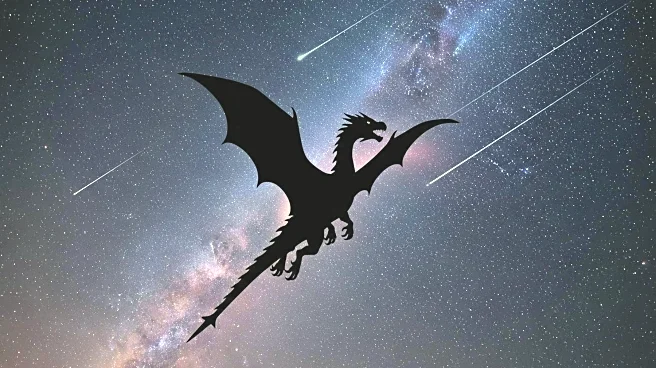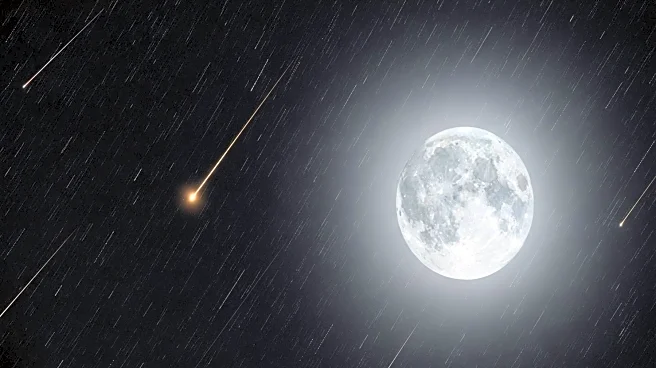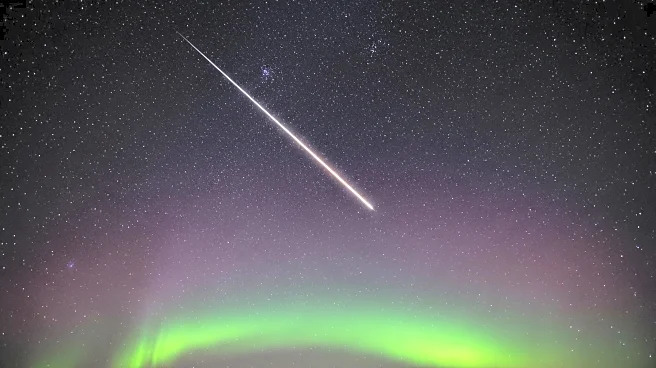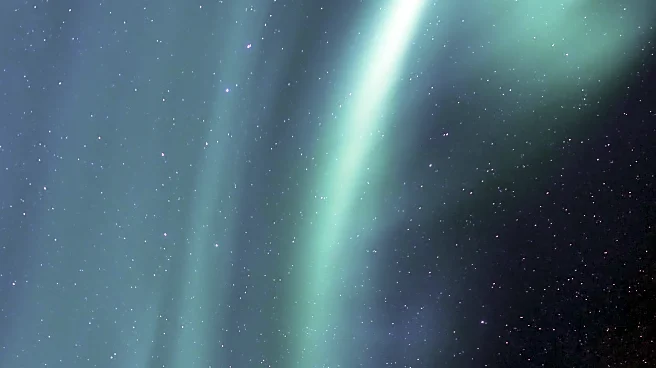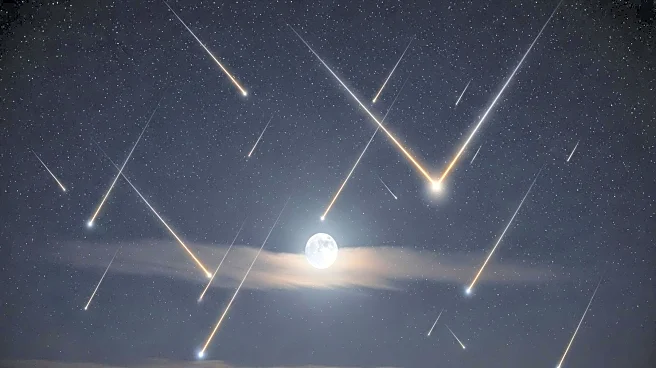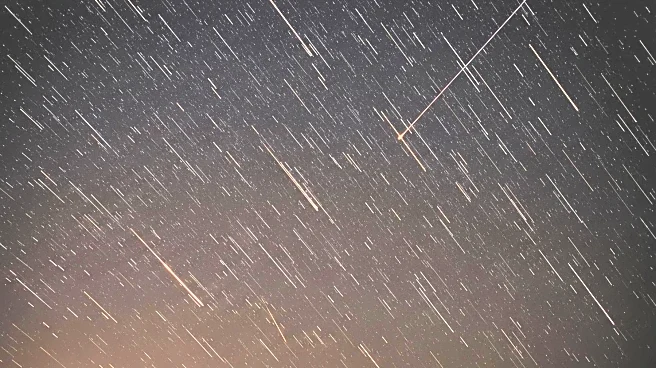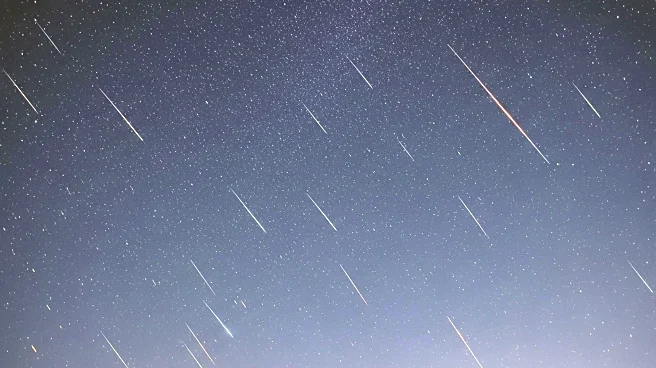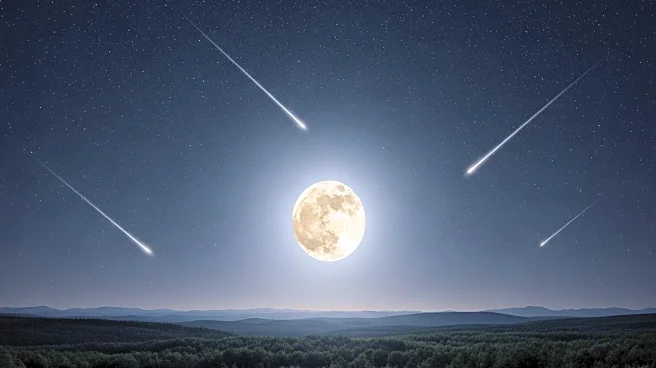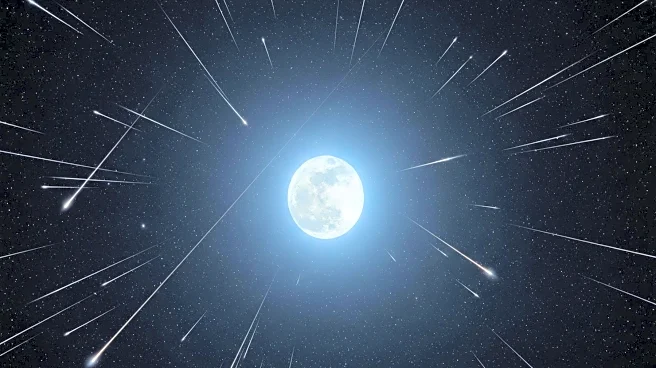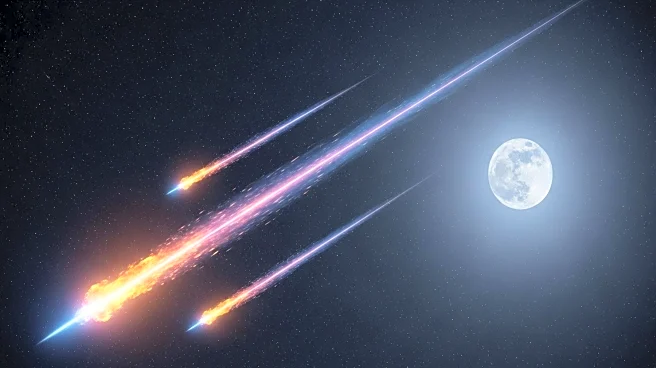What's Happening?
The Draconid meteor shower is set to peak on October 8, 2025, at 3 p.m. ET. Known for its brief and unpredictable displays, the Draconids are caused by debris from comet 21P/Giacobini-Zinner. This year, the shower coincides with a bright supermoon, which may obscure visibility. The best viewing time is early evening, as the constellation Draco is high in the northern sky. Despite the moonlight, skywatchers are encouraged to look northward to catch glimpses of the meteors.
Why It's Important?
The Draconid meteor shower is a reminder of the dynamic interactions between Earth and cometary debris. While this year's visibility may be limited, the event still offers a chance for public engagement with astronomy. The Draconids' unpredictability adds intrigue, as past years have seen meteor storms with hundreds of meteors per hour. This unpredictability highlights the need for continued observation and study of meteor showers to better understand their patterns and origins.
What's Next?
Following the Draconids, the Orionid meteor shower will peak later in October, offering a more visible display due to the absence of moonlight. The Orionids are expected to produce 10 to 20 meteors per hour, providing another opportunity for skywatchers to enjoy celestial events. These consecutive meteor showers highlight October as a prime month for astronomical observation.
Beyond the Headlines
The Draconid meteor shower's connection to comet 21P/Giacobini-Zinner provides valuable data for scientists studying cometary behavior and the solar system's evolution. The event also emphasizes the importance of reducing light pollution to enhance visibility of such natural phenomena, fostering a greater appreciation for the night sky.

